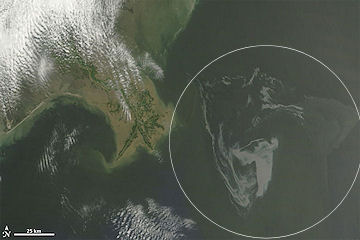NEW AND IMPROVED: Turn your iPhone or iPod Touch into a field-tested global satellite tracker. The Satellite Flybys app now works in all countries. | | | GEOMAGNETIC STORM: High-latitude sky watchers, if it's dark where you live, go out and look for auroras. A geomagnetic storm is underway after a high-speed solar wind gust hit Earth's magnetic field on May 2nd. aurora images: from Tom Eklund of Valkeakoski, Finland NO-NAME ACTIVE REGION: An unstable nest of magnetic fields emerged over the sun's northeastern horizon yesterday, and it is crackling with C-class solar flares. Astrophotographer Pete Lawrence sends this picture from his backyard observatory in Selsey, UK: 
Although the maelstrom does have a small dark core, technically making it a sunspot, it has not yet been sunspot-numbered by NOAA. Readers with solar telescopes are encouraged to keep an eye on the no-name active region--it's where the action is. more images: from Rogerio Marcon of Campinas - SP - Brasil; from Steve Riegel of Santa Maria, CA; from Matt Wastell of Brisbane, Australia; from Wouter Verhesen of Sittard,The Netherlands; from Andy Devey of Barnsley South Yorkshire England; from Cai-Uso Wohler of Bispingen, Germany; GULF OF MEXICO OIL SPILL: This weekend, BP's oil spill in the Gulf of Mexico has more than tripled in size to 4000+ square miles--about the same size as Chesapeake Bay. The slick is so big, it is visible from space: 
NASA’s Terra satellite captured this natural-color image of the expandiing slick near the Mississippi Delta on May 1st. The outskirts of the spill are now reaching sensitive Gulf shore wetlands where the ecological impact could be severe. According to some estimates, as much as 210,000 gallons of crude oil a day are leaking into the Gulf, so the slick is only going to grow larger. Satellite images of Earth are usually beautiful. This is a rare exception. Check NASA's Earth Observatory for updates from orbit.
April Northern Lights Gallery
[previous Aprils: 2009, 2008, 2007, 2006, 2005, 2004, 2003, 2002] | 
